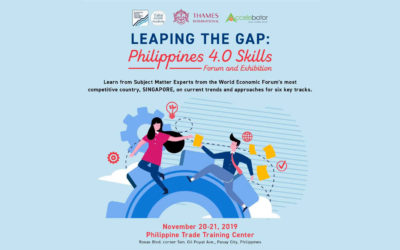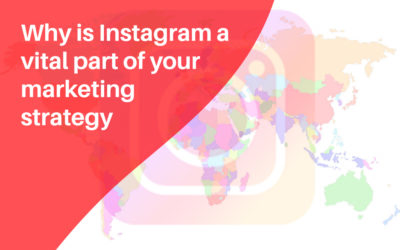The future is now. Well, in some cases, the future is past. The sci-fi movie Blade Runner, made in 1982 and 2017, set the future in 2019. It got some things right (or at least headed that way in terms of flying cars and “android” helpers) and some things wrong (like...

The 4th Industrial Revolution and what does the future look like for SMEs?
The Conglomerate
The 1960s saw a plethora of conglomerates being used to raise finance with low interest due to their risk diversification and other factors. It was also glamorous to be seen owning diverse industries, like Woolies or Woolworths Group in UK. Free cash flows providing risk capital for investment and cross-selling between customer databases were some of the advantages. However, this was short lived as the conglomerate could not keep up with inflation, interest rate and manageability. It was difficult to sustain or justify the share price in the market. Conglomerates began consolidating, de-merging and returning to their core competencies.
The problems with conglomerates were many – cash management, costs, cross-subsidies, increased layers of often diverse management, decreased transparency in accounting and cash position, bureaucracy, inertia and difficulty in calculating true value of the stock. Spin-offs of subsidiaries of conglomerates to counter disruption or effective evaluate them were options, but too expensive to even consider. The conglomerate was no longer serving its purpose and are fast becoming disrupted with technology which contributed with increased confusion over digital, big data and data analytics due to their diverse nature. Take for instance conglomerates like Kodak who were too arrogant to recognize simple disruption by refusing to acknowledge digital photography.
The Digital Revolution
According to the World Economic Forum – “The First Industrial Revolution used water and steam power to mechanize production. The Second used electric power to create mass production. The Third (3IR) used electronics and information technology (technology) to automate production. Now a Fourth Industrial Revolution (4IR) is building on the Third, the digital revolution that has been occurring since the middle of the last century. It is characterized by a fusion of technologies that is blurring the lines between the physical, digital, and biological spheres”.
Technology brought about a new age of small businesses with big changes. Changes disrupting conglomeration. 3IR brought in a new age of entrepreneurship. Individuals began their own businesses. These companies brought in techies, nerds and geeks together to begin small but disruptive companies. The internet boom and bubble were born. With computers and the internet, the 3rd industrial revolution (3IR), everything began to change. Disruption. Information along with services and products were delivered at the doorstep. But traditional SMEs were scrambling to stay relevant. They still are.
4th Industrial Revolution
Riding on 3IR, the 4IR is further bringing in individuals who are fast embracing individual businesses or companies led by a key handful of people. Concepts like AI, AR, VR, IoT, robotics, autonomous vehicles, 3-D printing, nanotechnology, biotechnology, materials science, energy storage, and quantum computing merge the virtual with reality. Changes which used to take years are now converted into months and weeks.
Industries today are fast becoming disrupted with these technologies which are capable of rendering many, conglomerates and individuals alike, jobless. Typical cases in big companies were Novar plc and those mentioned above. However, even though businesses based on 4IR were disruptive on human capital, their valuations were based on projections and investments and not on the value of the company itself. Cost of the company was the exit potential it provided; mainly in trade sales or the holy grail of startups – the IPO. Technology might very well be a victim of its own success.
The Disruption
Many traditional industries which are primarily process driven, face problems of survivability and sustainability. Many are content to compete for the ever-shrinking market. While few key players continue to survive, ones without USPs or MSPs, are in clear and present danger of folding up. 3IR and 4IR provided power to the hands of small businesses and individuals. It became the great equalizer. What a small startup or SME can achieve in a few dollars would take a larger corporation weeks or months and a high budget. The digital revolution disrupts businesses and populations. Tech companies too have their own problems. Management and perception issues like those faced by Uber in the US and Housing.com in India. Wisdom and maturity are key issues ignored by these fast companies.
Advanced countries that have trained its citizens on process based thinking are in immense danger of having their jobs displaced by technology. While large companies build their own technology in-house, the problem is the objective and objectivity. Such companies have a specific direction and the in-house department solves that. Many a times the universality of application of that technology is lost. Not so with the smaller guys. Their problem-solving ability is more objective. More global. They begin ideating with the objective of scaling up, internationalizing and disrupting. But great care must be exercised with in-house tech or a tech acquisition. There are many failures such as Mattel Inc’s 1999 $3.6 billion acquisition of The Learning Company; who can forget Napster, a company in its death helped monetize customers for companies like Apple and Amazon; and my own personal favourite, Palm.
The CoAggregation
There is a solution. What is the future for SMEs if it cannot be a conglomerate or ride on 3IR and 4IR? A CoAggregate. Where smaller companies or SMEs in the same or similar sector create a larger company and co-own it. So as the age of conglomerates descend, the startup/entrepreneur/SME must also evolve. Both these forms of business need to adapt rapidly with changing their business models, collaborate, innovate and future-proof disruption. They need to survive and sustain. A process where the SMEs get together and co-own a larger enterprise while pursuing their own company interests. Creation of a matrix of complementary in-line companies – that are intertwined and where they are of the highest relevance to each other – ensures survivability and sustainability. Just as senior more experienced workers can impart invaluable experience and wisdom to millennials and millennials provide drive and innovation to the experienced, so also do traditional SMEs provide the valuable input to new and modern technologies and the latter provides not just customized, but a much broader perspective to industry applicability. Technology SMEs need the wisdom and maturity of the traditional SMEs. They must expand their business universe – together.
They must “CoAggregate”.
For partnerships, speaker and general business enquiries with 2iB Partners:
| Contact Person | Dylan Tan |
| Designation | COO |
| Dylan@2ibpartners.com |
YOU MAY LIKE
The Future Employee
Philippines 4.0 Skills Conference | 20-21st Nov
In conjunction with Philippine Trade Training Center, Global MSME Academy, Thames International and accelebator, 2iB Partners will be speaking on Emerging Trends in Retail, HR Transformation and how to internationalize your business. Learn from 12 different...
Mergers & Acquisitions – simplified. Or, a practical guide
M&A process
1. Strategy
2. Identification
3. Preliminary Due Diligence
4. Expressions of Interest
5. Detailed Due Diligence
6. Definitive Documentation
7. Post M&A
1. Strategy:
M&A begins with an idea in a company that helps it increase market share and access, t
Is having a Corporate Social Responsibility (CSR) program just a cost to your company?
Developing great companies that give back is more about devising a clear Corporate Social Responsibility (“CSR”) program aligned with the company’s goals and values rather than forcefully integrating CSR with their business strategies and goals. Instead of passing it off as a short term marketing gimmick, CSR should be seen as a long term investment strategy.
3 Key Notes Before Entering a New Market [Video & Transcript]
The above is a video taken during one of 2iB Partners master class where our advisor Mr. Richard Eu answers a question on “3 Key Notes Before Entering a New Market” by a business owner, Mr. Peh Zheng Yang. [Begin Transcript] Mr. Peh: You mentioned something like for...
Why is Instagram a Vital Part of your Marketing Strategy
Throw a stone and you will probably find someone who is taking a photo to post on Instagram. There has also been a strong push for consumer centric businesses to produce and develop products that are “Insta-worthy”. Whether it’s






![3 Key Notes Before Entering a New Market [Video & Transcript]](https://2ibpartners.com/wp-content/uploads/2017/06/map-1862587_1920-400x250.jpg)
